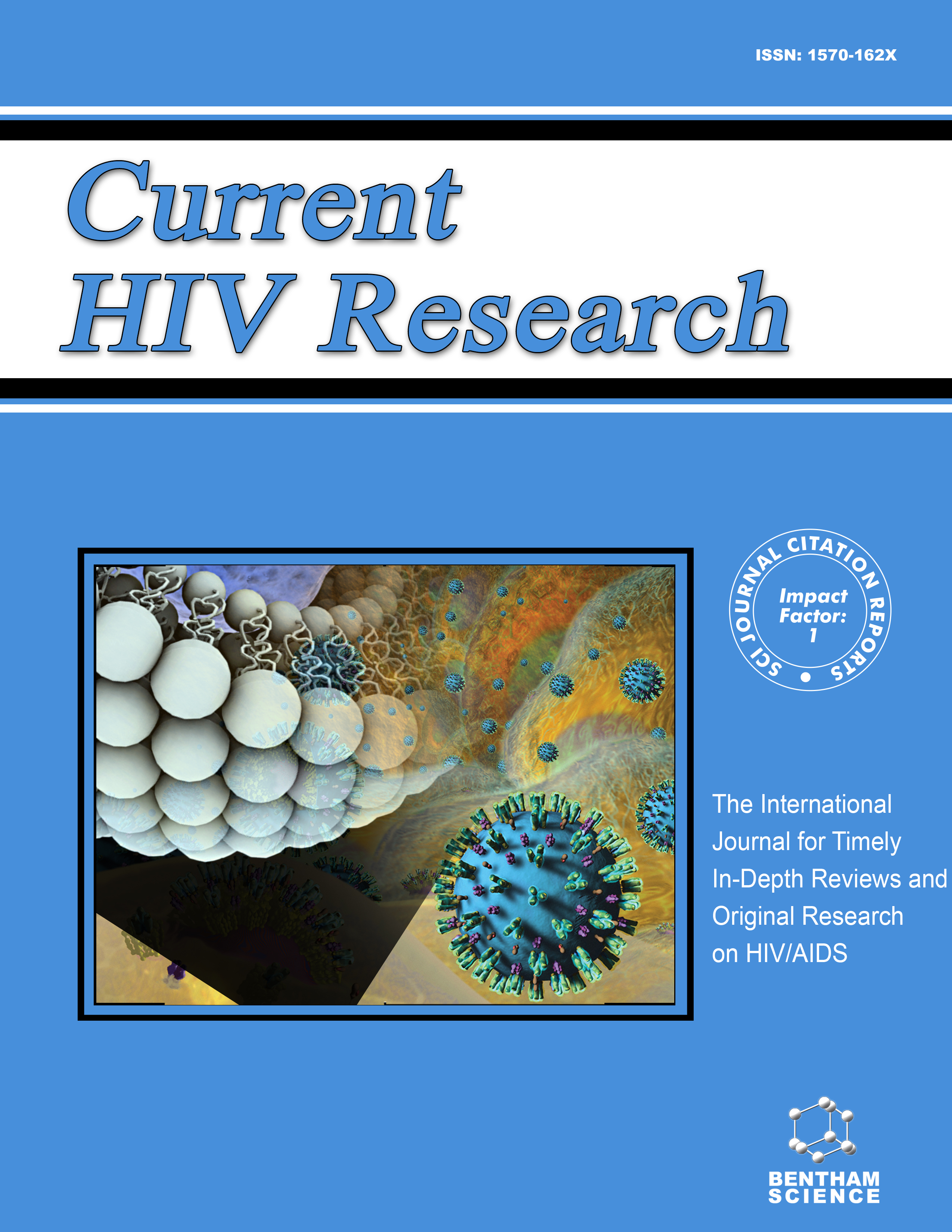- Home
- A-Z Publications
- Current HIV Research
- Previous Issues
- Volume 22, Issue 4, 2024
Current HIV Research - Volume 22, Issue 4, 2024
Volume 22, Issue 4, 2024
-
-
Handgrip Strength and Clinical Evolution of People Living with HIV: A Mini Narrative Review
More LessHIV infection is a worldwide epidemic. Antiretroviral therapy allows people living with HIV (PLHIV) increased longevity and a better quality of life. Among the various ways of monitoring the clinical evolution of PLHIV, handgrip strength (HGS) is a promising strategy, as this test can be used to assess the health condition quickly and at a low cost. In this sense, the present study aims to describe, through a literature review, the r Read More
-
-
-
Does Maternal HIV Infection Affect Neonatal Outcomes?
More LessBackground Pregnancy among women infected with HIV is classified as a high-risk pregnancy. While previous research has indicated an elevated likelihood of preterm birth, low birth weight, and early gestational age in infants born to mothers with HIV, the correlation between maternal HIV infection and different neonatal results remains unclear. Objective This study aims to investigate the impact of maternal HIV infection on Read More
-
-
-
Genotyping and Antiretroviral Drug Resistance Mutations among HIV Patients in Southern Santa Catarina, Brazil
More LessIntroduction Therapeutic measures have been successful in increasing survival rates and quality of life of HIV/AIDS-infected people. However, some people fail to respond to antiretroviral therapy (HAART) because of viral resistance-associated mutations. Objective To identify virus genotype and the presence of mutations that alter the susceptibility to HAART, and factors associated with the occurrence of these mutations. Method Read More
-
-
-
Prevalence and Causes of Vitamin D Deficiency in a Cohort of Greek HIV-Infected Individuals: A Prospective, Single Center, Observational Study
More LessBackground Vitamin D deficiency and/or insufficiency (hypovitaminosis D) has been associated with several disorders including autoimmune diseases, like type 1 diabetes mellitus; cardiovascular diseases; neoplasms; obesity; insulin resistance, and type 2 diabetes mellitus. This problem is common in southern European countries, especially in elderly and institutionalized persons. In HIV-infected individuals, hypovitaminosis Read More
-
-
-
Knowledge about HIV and Stigmatizing Attitudes of Medical Students in Saudi Arabia Towards Patients with HIV/AIDS: A Cross-Sectional Nationwide Study
More LessBackground The Human Immunodeficiency Virus (HIV) and the social stigma directed toward patients with HIV are serious public health issues. We aimed to evaluate the HIV knowledge base and stigmatizing attitudes toward patients with HIV among students enrolled in medical schools in Saudi Arabia. Methods This cross-sectional study included students at medical colleges in Saudi Arabia and was conducted between February a Read More
-
-
-
Risk Factors Associated with Osteopenia/Osteoporosis in Antiretroviral Therapy Naive HIV Patients
More LessAuthors: Pinar Onguru and Bulent KayaIntroduction/Objectives Different ART (antiretroviral therapy) options may affect the risk of osteopenia/osteoporosis in people living with HIV (PLWH) having increased life expectancy. Current guidelines recommend bone mineral density (BMD) measurement only in patients at risk. In our study, we investigated the prevalence of osteopenia/osteoporosis and associated risk factors in naive patients not receiving ART. Methods This stu Read More
-
-
-
Frequency of Human Leukocyte Antigen-B*57:01 Allele Carriers in People Living with HIV/AIDS in Türkiye
More LessIntroduction Abacavir is among the first-line initial antiretroviral regimens for most patients living with HIV/AIDS (PLWHA). Although well tolerated, it is associated with hypersensitivity reaction (HSR), which is treatment-limiting and potentially life-threatening. HSR was shown to be associated with the class I MHC allele, HLA-B*57:01. In this study, we aimed to evaluate the prevalence of HLA-B*57:01 in PLWHA in Istanbul, Türkiye. Ma Read More
-
-
-
Associated Factors of Sexual Initiation among Male Vocational High School Students in Zhejiang Province, China: A Cross-sectional Study
More LessAuthors: Xiang Zhao, Zhongrong Yang, Hui Wang, Yu Huang and Weiyong ChenAims This study aims to investigate the factors associated with sexual initiation among male vocational high school students (MVHSS) in Zhejiang Province, and provide a scientific basis for preventing unsafe sexual behavior and sexual health issues among adolescents. Background The prevalence of sexual behavior among young students has risen significantly in recent years. Contracting HIV poses a serious physical an Read More
-
Volumes & issues
-
Volume 22 (2024)
-
Volume 21 (2023)
-
Volume 20 (2022)
-
Volume 19 (2021)
-
Volume 18 (2020)
-
Volume 17 (2019)
-
Volume 16 (2018)
-
Volume 15 (2017)
-
Volume 14 (2016)
-
Volume 13 (2015)
-
Volume 12 (2014)
-
Volume 11 (2013)
-
Volume 10 (2012)
-
Volume 9 (2011)
-
Volume 8 (2010)
-
Volume 7 (2009)
-
Volume 6 (2008)
-
Volume 5 (2007)
-
Volume 4 (2006)
-
Volume 3 (2005)
-
Volume 2 (2004)
-
Volume 1 (2003)
Most Read This Month
Article
content/journals/chr
Journal
10
5
false
en


